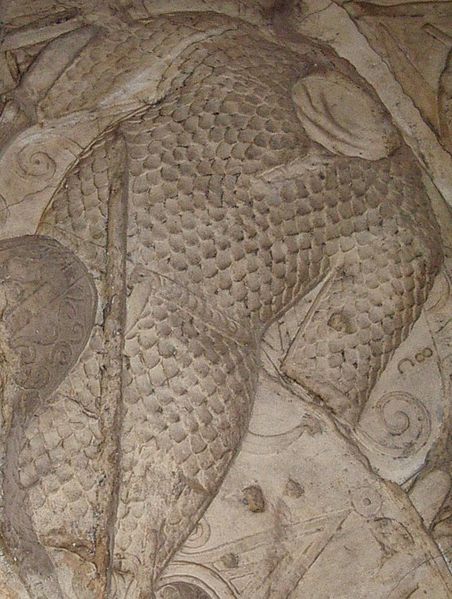The Dacian draco was a military standard used by troops of the ancient Dacian people, which can be seen in the hands of the soldiers of Decebalus in several scenes depicted on Trajan's Column in Rome, Italy. This wind instrument has the form of a dragon with open wolf-like jaws containing several metal tongues. The hollow dragon's head was mounted on a pole with a fabric tube affixed at the rear. In use, the draco was held up into the wind, or above the head of a horseman, where it filled with air and gave the impression it was alive while making a shrill sound as the wind passed through its strips of material. The Dacian draco likely influenced the development of the similar Roman draco.
Dacian draco on from Trajan's Column
Dacian Draco on Trajan's Column
The Dacians bearing the draco on Trajan's Column
The so-called Dacian Riders-God bears a draco (c. 2nd century AD, Bucharest Antiquities Museum).
The history of Dacian warfare spans from c. 10th century BC up to the 2nd century AD in the region defined by Ancient Greek and Latin historians as Dacia, populated by a collection of Thracian, Ionian, and Dorian tribes. It concerns the armed conflicts of the Dacian tribes and their kingdoms in the Balkans. Apart from conflicts between Dacians and neighboring nations and tribes, numerous wars were recorded among Dacians too.
Tropaeum Traiani depicting a soldier armed with a falx
Tropaeum Traiani depicting a soldier armed with a falx
Dacian scale armour
Sica, a small version of the falx







